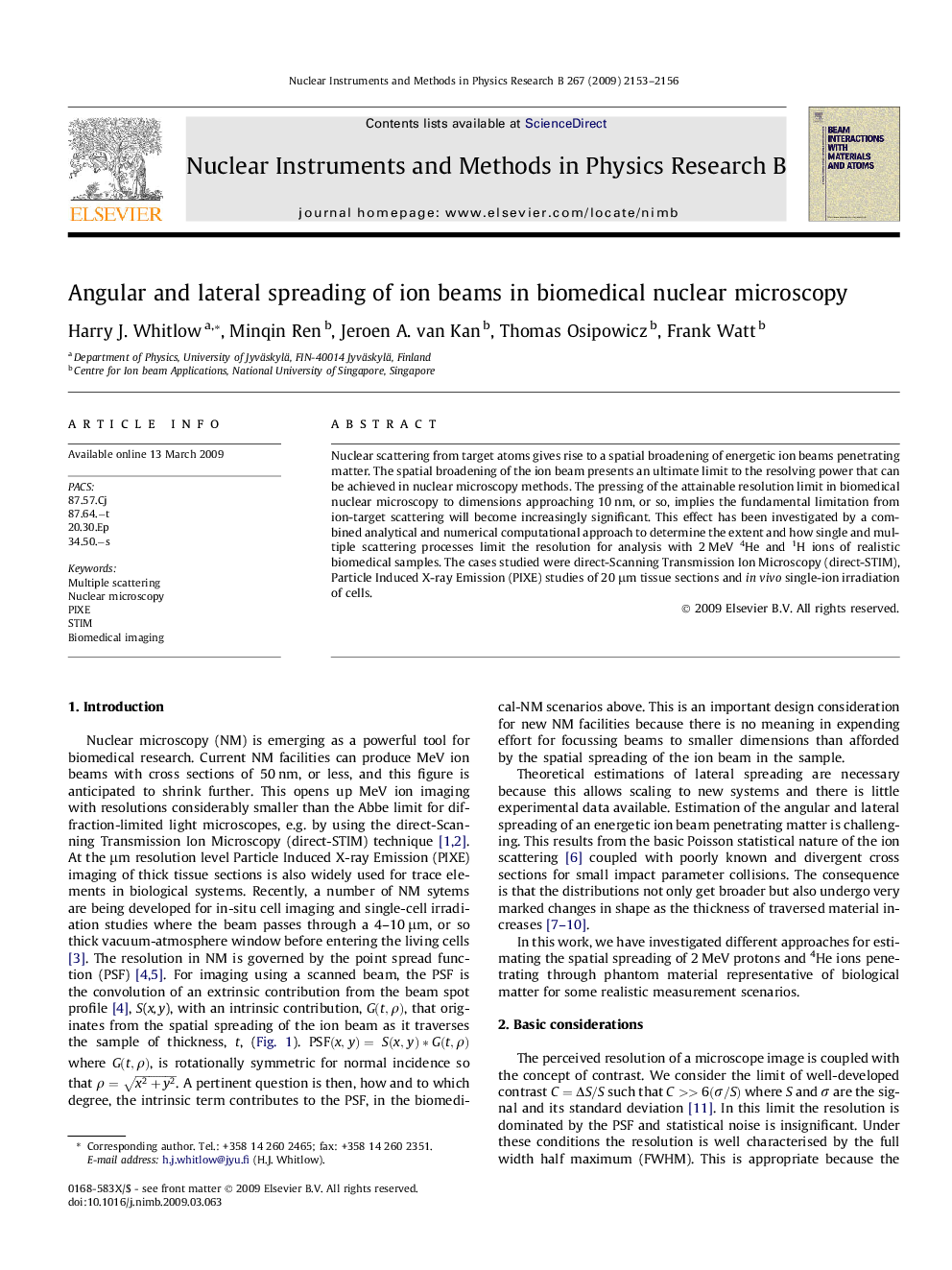| Article ID | Journal | Published Year | Pages | File Type |
|---|---|---|---|---|
| 1687249 | Nuclear Instruments and Methods in Physics Research Section B: Beam Interactions with Materials and Atoms | 2009 | 4 Pages |
Nuclear scattering from target atoms gives rise to a spatial broadening of energetic ion beams penetrating matter. The spatial broadening of the ion beam presents an ultimate limit to the resolving power that can be achieved in nuclear microscopy methods. The pressing of the attainable resolution limit in biomedical nuclear microscopy to dimensions approaching 10 nm, or so, implies the fundamental limitation from ion-target scattering will become increasingly significant. This effect has been investigated by a combined analytical and numerical computational approach to determine the extent and how single and multiple scattering processes limit the resolution for analysis with 2 MeV 4He and 1H ions of realistic biomedical samples. The cases studied were direct-Scanning Transmission Ion Microscopy (direct-STIM), Particle Induced X-ray Emission (PIXE) studies of 20 μm tissue sections and in vivo single-ion irradiation of cells.
